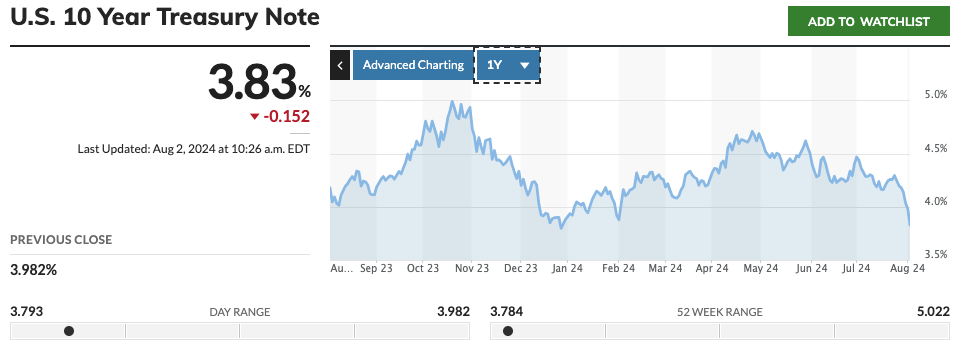On August 2, in an interview with Bloomberg TV, Rick Rieder, the Chief Investment Officer of Global Fixed Income at BlackRock, shared his thoughts on the current state of interest rates, the U.S. economy, and his investment strategies.
Interest Rates and Economic Consistency
Rieder’s primary assertion during the interview was that the current pricing for interest rates does not align with the state of the economy or the prevailing inflation rates. He highlighted several key points:
- Misalignment with Inflation: Rieder mentioned that the current interest rate of 5.38% is not consistent with the inflation rate, which he suggests is running close to 2% based on a three-month moving average. He said that this indicates that the Fed’s rates are too high given the current inflation levels.
- Labor Market Dynamics: He noted that there is growing slack in the labor force, suggesting that the economy might not be as strong as it appears. He believes that this slack in the labor market further justifies the need for lower interest rates.
What Does “Behind the Curve” Mean?
The term “behind the curve” is used to describe a situation where a central bank, such as the Federal Reserve, is perceived to be acting too slowly in adjusting interest rates in response to changing economic conditions. In this context, Rieder believes that the Fed has not lowered interest rates quickly enough to reflect the current low inflation and slack in the labor market.
Federal Reserve’s Position and Recommendations
When questioned about the Federal Reserve’s policies, Rieder opined that the Fed is “behind the curve.” He recommended that the Fed should:
- Reduce Interest Rates: Rieder suggested that the Fed lower interest rates to around 4% to 4.5% to better match current economic conditions and inflation rates.
- Consider a 50-Basis-Point Cut: He believes that a 50-basis-point cut is necessary to meet market expectations and align rates with economic reality.
Market Reactions and Investment Strategy
Rieder pointed out the remarkable rally in the bond market, noting that the 10-year Treasury yield has dropped significantly below 4%, a considerable decline from the 4.4% seen after the June numbers.

According to Rieder, despite the Fed’s stance, the markets seem to be moving independently, signaling a belief that the Fed will eventually have to adjust its policies.
The U.S. 10-Year Treasury Note is a debt obligation issued by the United States Department of the Treasury that matures in 10 years. It is considered a benchmark for other interest rates and is a key indicator of investor sentiment about the economy. When the yield on the 10-year Treasury Note falls, it typically indicates increased demand for these relatively safe investments, often due to concerns about economic growth or stability.
Investment Outlook
In terms of investment strategy, Rieder remains steadfast in his approach:
- Belly of the Yield Curve: He continues to advocate for owning assets in the belly of the yield curve. He sees this part of the yield curve, typically referring to bonds with maturities of 5 to 7 years, as offering a balanced risk-reward profile.
- Yielding Assets: Rieder recommends holding onto yielding assets through 2024 and likely into the next year. He also mentioned that yield assets, such as bonds and dividend-paying stocks, provide steady income, which could be particularly valuable in a volatile market.
According to a report by Reuters, Quincy Krosby, chief global strategist at LPL Financial, told them the decline in the 10-year Treasury yield to below 4% signals concerns about potential economic growth issues, raising doubts about whether the Federal Reserve is justified in waiting until September to begin its easing cycle, as reported by Reuters. He believes this situation questions whether the Fed is accurately interpreting the current data.
During its recent policy meeting, which concluded on Wednesday, the Fed decided to keep rates unchanged. However, Fed Chair Jerome Powell indicated that September could be the starting point for interest rate cuts.
The Reuters report went on to say that market expectations for a significant 50-basis-point interest rate cut at the Fed’s next policy meeting in September have increased significantly, with the probability rising to 27.5% from 11.8% the previous day, according to data from the CME Group’s FedWatch tool.









